Menu
Menu
$1,198.00
The Grow Pros AK800 Pro High Bay Greenhouse LED Lights is the preferred choice for 1:1 HPS replacement. The Grow Pros AK800 Pro High Bay LED Lights features higher efficiency with equal optical performance or higher than standard HPS grow lights. AK800 Pro High Bay LED Lights saves you more money within as little as 6-8 months when installed in optimal grow room conditions. The Grow Pros AK800 Pro is long-lasting, easy-to-maintain, and better for long-term exponential growth of your plants and your business.
What’s in the box:
1x AK800 Pro
1x 12ft power cord
1x 240V to 120V adapter
1x RJ12 Data cable
1x Pair Mounting Hangers
1x Pair Unistrut Hooks
| HEAT LOAD PER FIXTURE | 2729.71 BTU |
| PERFORMANCE DATA | MAX. POWER @ 12" HEIGHT |
| PPF | 2150 µmol/s |
| PPE | 2.7 µmol/J |
SEPCIAL DISTRIBUTION

MAXIMUM POWER ELECTRICAL DATA
| AC VOLTAGE | 120V | 208V | 240V | 277V |
| AC CURRENT | 6.8A | 3.9A | 3.5A | 3.0A |
| AC POWER | 826W | 808W | 800W | 798W |
| POWER FACTOR | 0.996 | 0.99 | 0.98 | 0.96 |
FEATURES & BENEFITS
PPFD READING

DIMESSIONS

Our AK800 Pro High Bay Greenhouse LED Grow Lights is an ideal alternative to HPS cannabis lights. Offering a lower heating rate and a superior photon conversion rate, these lights stand out as an excellent choice for replacing HPS lights. With an extended lifespan and a full spectrum tailored for optimal plant growth, our LED lights are well-suited for both indoor and greenhouse cultivation, ensuring your plants receive the perfect lighting conditions for their development.

Our Classic Series Grow Lighting, Ultra Series Grow Lighting and Beast Series Grow Lighting are fully compatible with the TrolMaster System, including the HYDRO-X SYSTEM, AQUA-X SYSTEM, TENT-X SYSTEM, and CARBON-X SYSTEM, with the use of the Adapter LMA-14. This seamless integration allows for a comprehensive control and monitoring solution, empowering growers to manage their indoor cultivation environments effortlessly.
The Classic Series, Ultra Slim Series and Beast Series are advanced full-spectrum LED matrix horticultural grow lights, meticulously designed to cater to the diverse needs of indoor growers. These lights offer customizable settings, allowing growers to adjust light intensity, spectrum, and duration according to specific plant requirements, resulting in improved crop yields and quality.
Designed to provide optimal lighting conditions for plant growth, the Classic Series, Ultra Slim Series and Beast Series, in conjunction with the TrolMaster System, offer an efficient and user-friendly solution for modern horticultural practices. With their adaptable features and precise control mechanisms, these lighting systems ensure that plants receive the ideal lighting conditions throughout their growth cycles, facilitating healthy and robust plant development.
Utility companies incentivize cultivators to embrace sustainability by offering rebates for approved LED grow lights. LEDs, renowned for their superior efficiency compared to traditional HID lights, consume less electricity while producing equivalent light output. This promotion underscores the commitment to energy-efficient solutions in indoor cultivation. Keep in mind that specific specifications and guidelines apply to the process of claiming these rebates, ensuring a seamless transition to eco-friendly lighting practices.
| WATTAGE | 800W |
|---|---|
| INPUT POWER | 120V – 277V |
| CONTROLLER | TrolMaster Hydro-X + LMA14 (26 Fixtures) |
| CONTROL | 0-10V dimming (0-100%) |
| POWER FACTOR | 0.9 |
| THD | 20% |
| SURGE PROTECTION | L/N-PE: 10kV, L-N: 6kV |
| WORKING TEMPERATURE | -40ºF ~ 122ºF |
|---|---|
| IP RATING | IP65 |
| SPECTRUM | Full spectrum |
| WARRANTY | 7 year limited |
| PPF | 2150 μmol/s |
| PPE | 2.7 μmol/J |
There are no reviews yet.
All Rights Reserved by GrowPros Solutions
Only logged in customers who have purchased this product may leave a review.